Info
Subfamily: Panicoideae
Genus etymology: Sorghum = "sorghum" [italian]
Species etymology: halepense = From Aleppo, Syria (Halab in Arabic)
Photosynthetic type: C4 (warm season)
Nativity: naturalized - intentional
First recorded in Hawaiʻi: 1902
Map
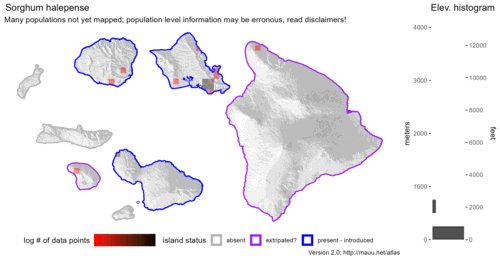
Inflorescence
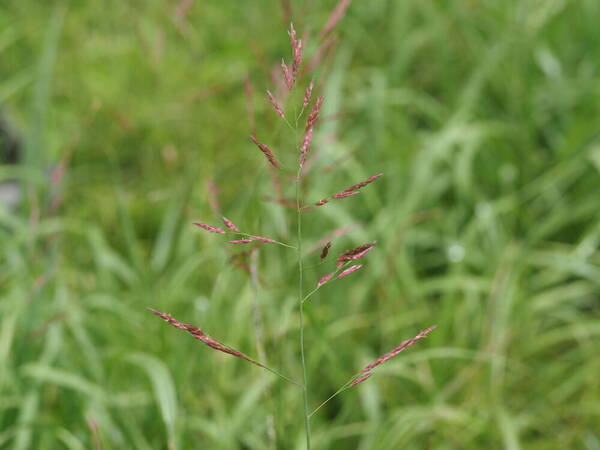
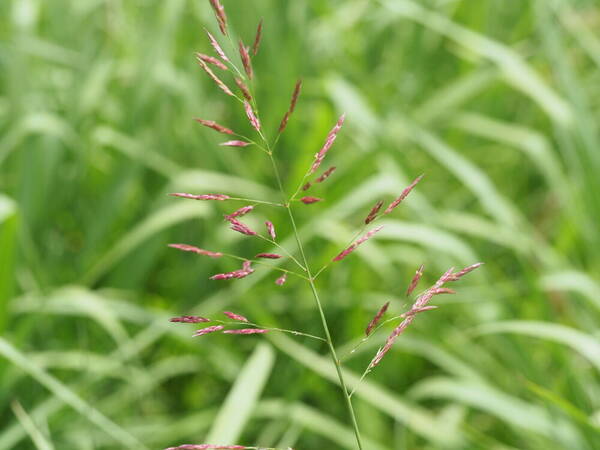
Plant
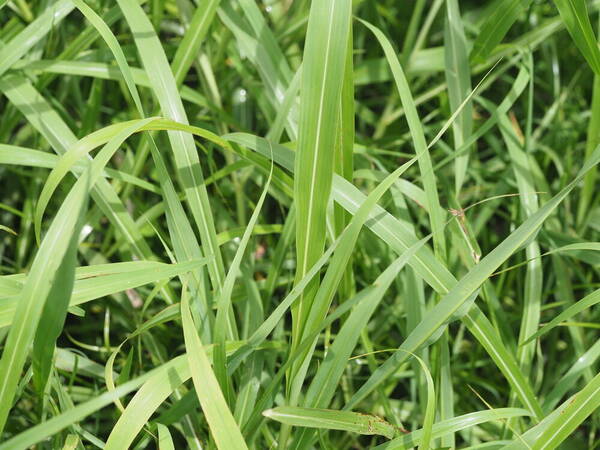
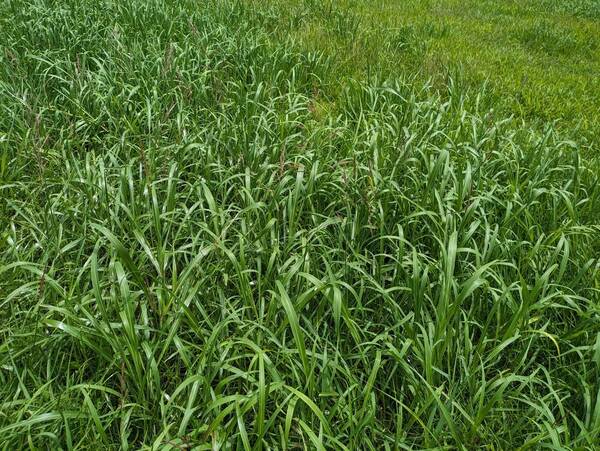
Habit
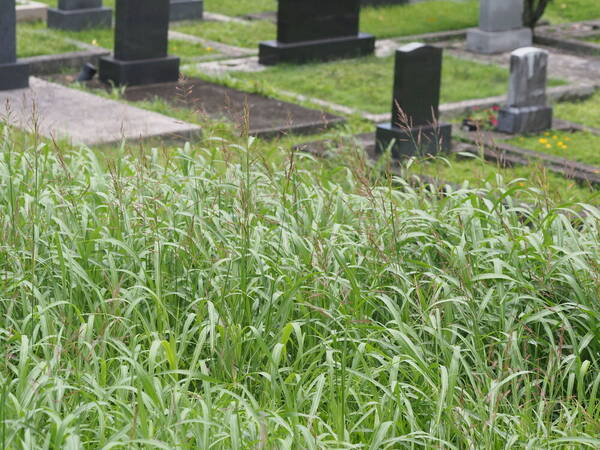
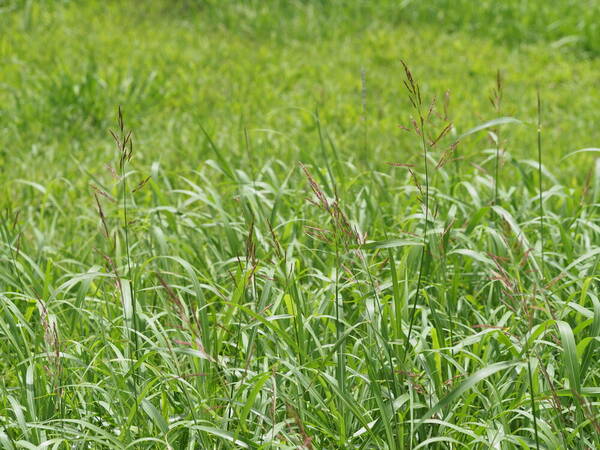
Spikelets
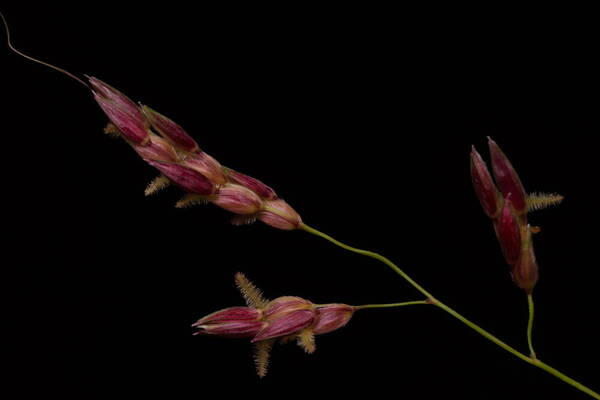
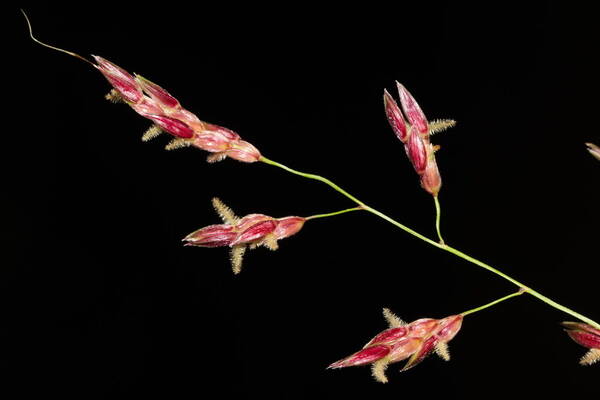
Rhizomes
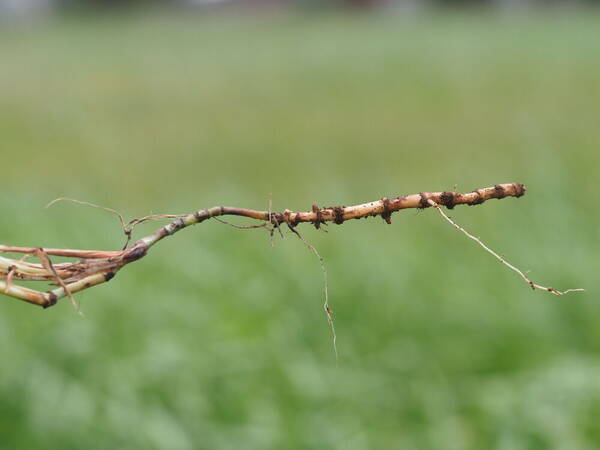
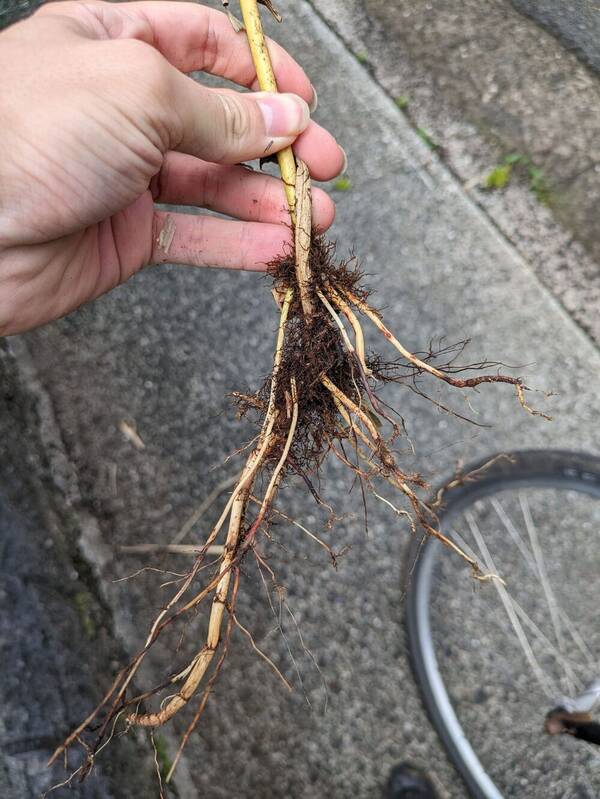
Description
Plants perennial; rhizomatous. Culms 50-200 cm tall, 0.4-2 cm thick; nodes appressed pubescent; internodes glabrous. Ligules 2-6 mm, membranous, conspicuously ciliate; blades 10-90 cm long, 8-40 mm wide. Panicles 10-50 cm long, 5-25 cm wide, primary branches compound, terminating in rames of 1-5 spikelet pairs; disarticulation usually beneath the sessile spikelets, sometimes also beneath the pedicellate spikelets. Sessile spikelets bisexual, 3.8-6.5 mm long, 1.5-2.3 mm wide; calluses blunt; glumes indurate, shiny, appressed pubescent; upper lemmas unawned, or with a geniculate, twisted awn to 13 mm; anthers 1.9-2.7 mm. Pedicels 1.8-3.3 mm. Pedicellate spikelets staminate, 3.6-5.6 mm; glumes membranous to coriaceous, unawned. Caryopses not exposed at maturity. 2n = 20, 40; several dysploid counts also reported.
(Description source: Barkworth, M.E., Capels, K.M., Long, S. & Piep, M.B. (eds.) 2003. Flora of North America, north of Mexico. Volume 25. Magnoliophyta: Commelinidae (in part): Poaceae, Part 2. Oxford University Press, New York. 783 pp http://floranorthamerica.org/Sorghum_halepense )
Perennials with stout, scaly rhizomes; culms 5-15 dm tall, sometimes branched, leafy, the nodes sometimes puberulent. Sheaths glabrous, sometimes puberulent across the collar; ligule membranous, 1.5- 3(-5) mm long, margins ciliate, cilia ca. 4 as long as the ligule; blades flat, 4-15(-25) mm wide, midrib conspicuous, margins scabrous, base pilose. Panicles 15-35(-50) cm long, open, branches spreading, 10-15 cm long, scabrous, axils pubescent; sessile spikelet ovate, 4-5.5(-6.2) mm long, glumes subequal, first glume 5-7-nerved, smooth and glossy, hispidulous on the margins or sometimes entire surface, second glume 3-nerved, glabrous, smooth and glossy in lower part, hispidulous toward apex, margins inrolled and clasping second lemma, first floret sterile, lemma 4-4.5 mm long, second floret perfect, lemma greatly reduced, nerves sometimes more prominent apically and marginally, awned, the awn stout, twisted, geniculate, 9-12(-15) mm long, with a terminal segment 4-7 mm long, palea ca. 2.5 mm long, hyaline, nerveless, margins long-ciliate, apex obtuse; pedicellate spikelet staminate, broadly lanceolate, usually slightly longer than the sessile spikelet, 4-6.5(-7) mm long, glumes subequal, first glume 9-nerved, flat to sulcate on back, lateral nerves scabrous, second glume 7-nerved, somewhat keeled or rounded on back, glabrous or the nerves scabrous or appressed hirsute. Caryopsis dark brown, ca. 2.5 mm long, strongly dorsiventrally compressed, enclosed by glumes at maturity, obovoid, styles persistent. [2n = 18, 20, 26, 40-43.]
(Description source: O’Connor, P.J. 1990. Poaceae, pp. 1481–1604. In: Wagner W.L., Herbst D.R. & Sohmer S.H. (eds.)., Manual of the flowering plant of Hawaiʻi. Vol. 2. University of Hawaii Press & Bishop Museum Press, Honolulu )